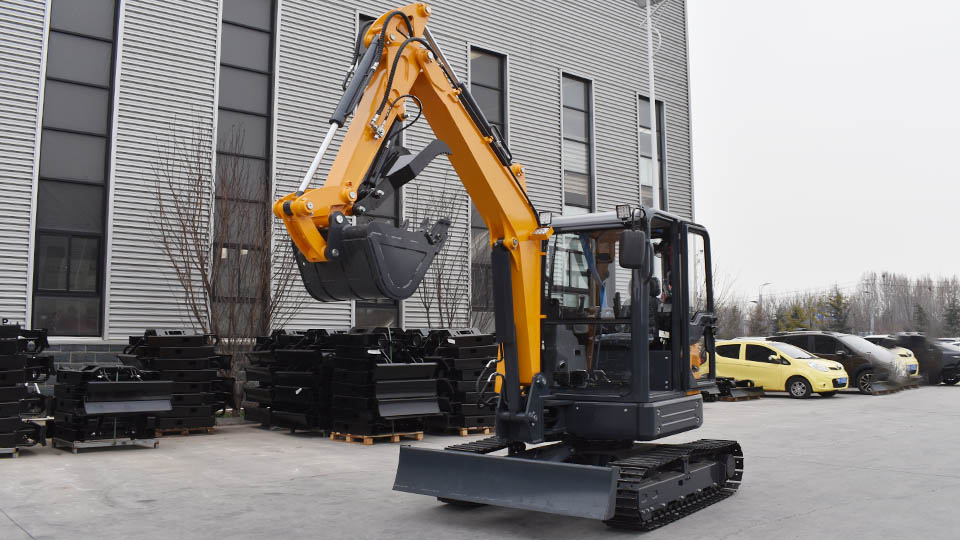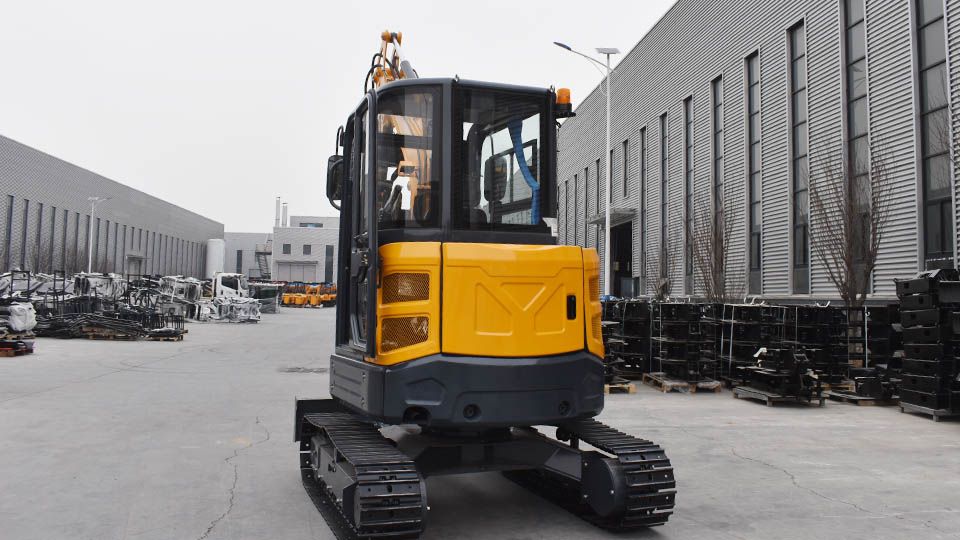The excavator a ubiquitous symbol of construction and earthmoving has undergone a remarkable transformation since its early iterations. From cumbersome steam-powered behemoths to the sophisticated hydraulic machines of today the evolution of excavator design has been driven by a relentless pursuit of increased efficiency power versatility and crucially a more favorable weight-to-performance ratio. This article explores the key milestones and technological advancements that have enabled manufacturers to produce lighter excavators capable of delivering stronger performance addressing the growing demands of modern construction and environmental considerations.
The earliest mini excavator was heavy slow and often unreliable. Powered by steam engines these machines were primarily employed in large-scale infrastructure projects where sheer power outweighed concerns about maneuverability or fuel efficiency. Their massive weight was a direct consequence of the materials and technologies available at the time primarily cast iron and rudimentary hydraulic systems if any. Transportation of these early excavators was a logistical challenge often requiring temporary rail lines or extensive disassembly and reassembly.
The advent of hydraulic power in the early twentieth century marked a significant turning point in excavator design. Hydraulic systems offered a far more efficient and controllable means of transferring power to the digging arm and other functions. Early hydraulic excavators while still substantial in weight began to offer improved digging force and cycle times compared to their steam-powered predecessors. However the weight reduction journey was gradual limited by the strength and weight of the steel alloys and hydraulic components available.
The mid to late twentieth century witnessed a period of rapid innovation in excavator design. Key advancements that contributed to both weight reduction and performance enhancement included:
Improved Steel Alloys: The development of high-strength low-alloy (HSLA) steels allowed manufacturers to use thinner and lighter structural components without sacrificing durability or strength. These new materials offered a significantly better strength-to-weight ratio compared to traditional carbon steels.
Advanced Hydraulic Systems: Innovations in hydraulic pump design valve technology and hose materials led to more efficient power delivery reduced energy losses and increased operating pressures. This allowed for more powerful digging and lifting capabilities from smaller and lighter hydraulic components. Electronic control systems for hydraulic functions further optimized performance and fuel efficiency.

Finite Element Analysis (FEA) and Computer-Aided Design (CAD): The adoption of FEA and CAD tools revolutionized the design process. Engineers could now simulate stresses and loads on virtual models allowing them to optimize structural designs identify areas of over-engineering and reduce material usage without compromising structural integrity. This led to lighter yet stronger frames booms and arms.
More Efficient Engine Technologies: The development of more fuel-efficient and power-dense diesel engines contributed to a better overall weight-to-power ratio. Turbocharging electronic fuel injection and advanced engine management systems allowed for increased power output from smaller and lighter engine blocks.
Optimized Component Placement: Careful consideration of component placement and weight distribution played a crucial role in enhancing stability and reducing the need for excessive counterweight. Compact designs and strategically located hydraulic components helped to improve the machine's balance.
The trend towards lighter yet stronger excavators has been further accelerated by the increasing demand for more versatile and environmentally friendly machines. Several factors are driving this evolution:
Enhanced Maneuverability and Accessibility: Lighter excavators particularly in the mini and compact classes offer superior maneuverability in confined spaces and are easier to transport between job sites. This is crucial for urban construction landscaping and utility work where access can be restricted.
Reduced Ground Pressure: Lighter machines exert less ground pressure making them suitable for working on sensitive surfaces such as finished landscaping lawns or paved areas without causing damage. This expands their applicability in residential and environmentally sensitive projects.
Lower Transportation Costs: The reduced weight of lighter excavators translates directly to lower transportation costs as they can often be moved on smaller trailers pulled by less powerful vehicles. This improves logistical efficiency and reduces the overall cost of ownership and operation.
Improved Fuel Efficiency: Lighter machines generally require less power to move and operate resulting in lower fuel consumption and reduced emissions. This aligns with increasingly stringent environmental regulations and the growing focus on sustainable construction practices.
Increased Versatility with Attachments: A lighter base machine that still offers strong hydraulic power allows for the efficient use of a wider range of attachments without exceeding the machine's operating limits. Quick coupler systems further enhance this versatility.
The ongoing evolution of excavator design continues to push the boundaries of what is achievable in terms of weight reduction and performance enhancement. Current trends and emerging technologies that are shaping the future of excavator design include:
Advanced Materials: Research and development into even lighter and stronger materials such as advanced composites and high-performance alloys promise further weight reductions without compromising structural integrity or durability.
Hybrid and Electric Powertrains: The integration of hybrid and fully electric powertrains is not only reducing emissions but also offering potential for weight optimization through redesigned engine compartments and the strategic placement of batteries. Electric motors can also offer instant torque and precise control.
Smart Hydraulics and Electrification of Functions: Moving away from purely hydraulic systems towards more intelligent electro-hydraulic or even fully electric actuation for certain functions can improve efficiency reduce weight and enhance controllability.

Telematics and Remote Operation: Advanced telematics systems provide valuable data on machine performance and utilization allowing for optimized maintenance schedules and potentially influencing future design iterations towards lighter more efficient machines. Remote operation technologies can also reduce the need for heavy protective cabs in certain hazardous environments.
Modular Design: The development of modular excavator designs could allow for easier customization and potentially lighter configurations tailored to specific tasks reducing unnecessary weight.
The evolution of excavator design towards lighter machines with stronger performance is a testament to continuous innovation in engineering materials and hydraulic technologies. This trend is driven by the practical demands of modern construction the increasing focus on environmental sustainability and the need for more versatile and cost-effective equipment. As materials science hydraulic systems and power train technologies continue to advance we can expect to see even lighter more powerful and more efficient excavators shaping the future of earthmoving and construction. The ability to achieve greater performance with less weight is not just an engineering feat it is a key factor in creating a more sustainable and productive construction industry.
Post time:Sep-25-2020
